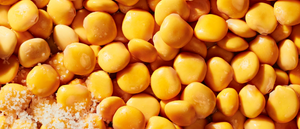Lupini beans were my favorite snack growing up. I would eat them underneath a tree when visiting my Nonna in Italy.
But it wasn’t until a trip to Italy with my wife Alenna in the mid-2010s that I rediscovered lupini and made it my life’s mission.
Alenna and I stumbled upon lupini in a convenience store and I told her, “We have to get these. I loved them as a kid!”
We proceeded to eat the entire bag in record time.
Alenna said, “How have I never heard of lupini beans before? They’re everything I’m looking for in a snack…. It’s like a Mediterranean edamame.”
I paused. I never considered them as Mediterranean edamame.
“What if there were flavors?” Alenna said.
And that’s when my head exploded. There weren’t any ready-to-eat flavored lupini beans.
When I came back home, I looked at the ready-to-eat lupini bean options and was disappointed with what I found. Most had artificial ingredients, no flavors, and seemed to be after-thoughts.
We decided people deserved an uncompromised version of lupini beans in America. I spent the next year turning our Brooklyn apartment into a lupini bean test kitchen, meticulously perfecting our recipes.
We launched Brami in 2016 and it has been amazing to share my treasured childhood snack with so many people.
At Brami, we are committed to quality first and foremost. That’s why we simply pickle our lupini beans in small batches. That’s why our lupini beans are produced slowly with care. And that’s why we only use simple, whole-food ingredients.
We created Brami so anyone could enjoy the magic of lupini beans conveniently, without the hassle.







